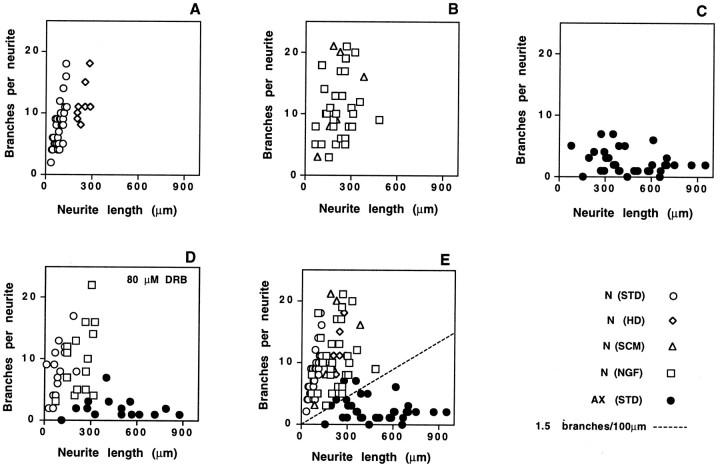Fig. 4.
Neurites of naive and pre-axotomized neurons define two distinct modes of axon growth. Previous axotomy in vivo influenced the growth characteristics of DRG neurons, prompting the extension of longer neurites with fewer branches during the first day in culture. The length and number of branch points were determined for the longest neurite extended by randomly selected DRG neurons from three separate experiments in which cultures had been fixed 16 hr after plating. Open symbols represent individual neurons from naive ganglia; filled symbolsthose from pre-axotomized ganglia. A, Naive cells plated under standard conditions (circles) or at high density, which promotes outgrowth from a majority of neurons (diamonds). B, Naive neurons cultured in the presence of schwannoma-conditioned medium (triangles) or NGF (squares).C, Pre-axotomized neurons plated under standard conditions. D, Inclusion of the transcription inhibitor DRB during dissociation and plating had no effect on length and branching. E, Data fromA–C plotted on a single graph. All neurites extended by naive neurons, regardless of culture conditions, exhibit a branching frequency > 1.5 branches per 100 μm (dotted line). This line, therefore, serves as a simple objective criterion for categorizing neurons. For subsequent quantitative analysis, data points that fall above this line will be scored as “arborizing” and those that fall below the line will be scored as “elongating.”

